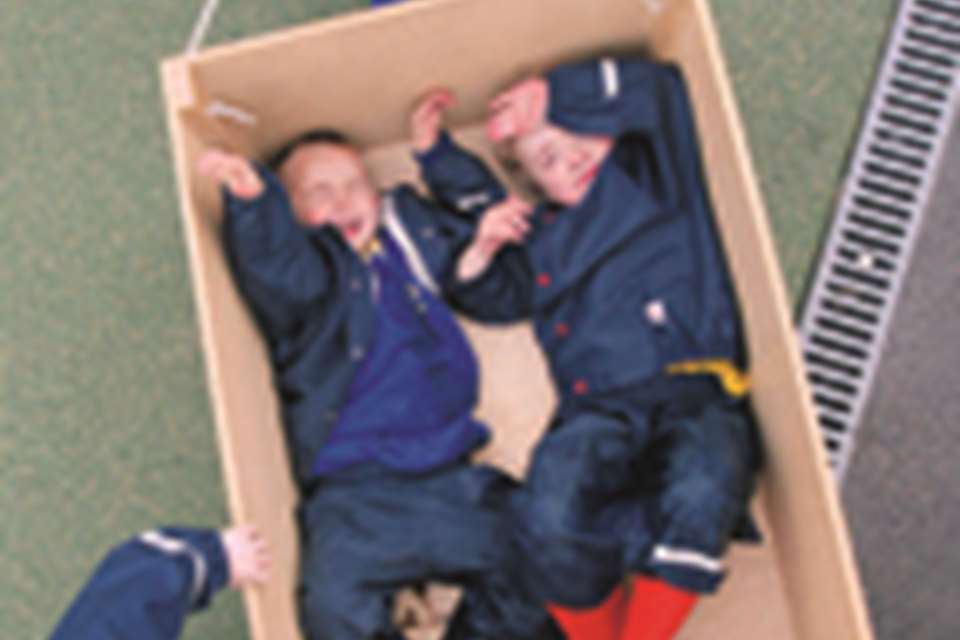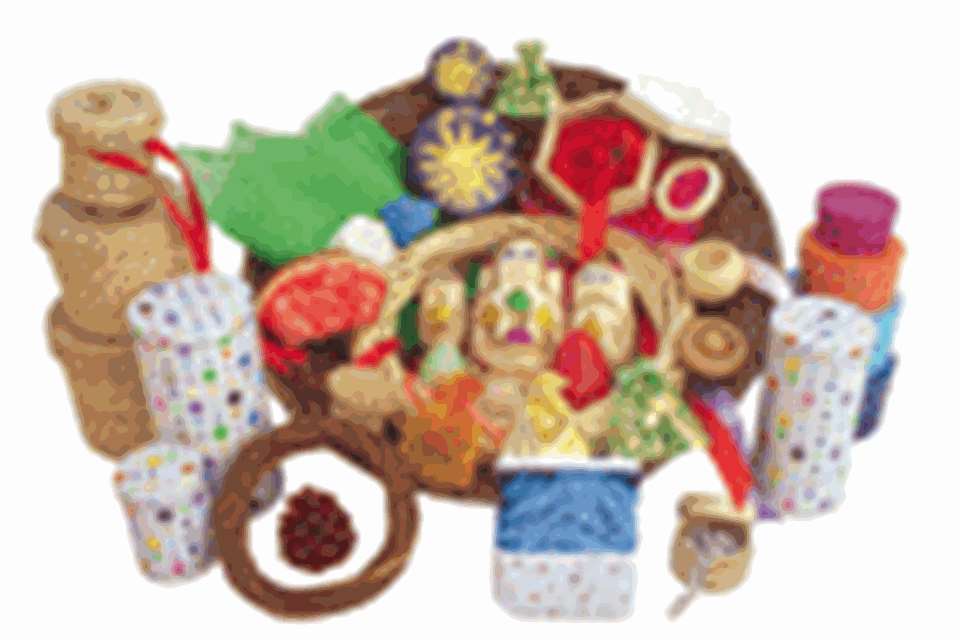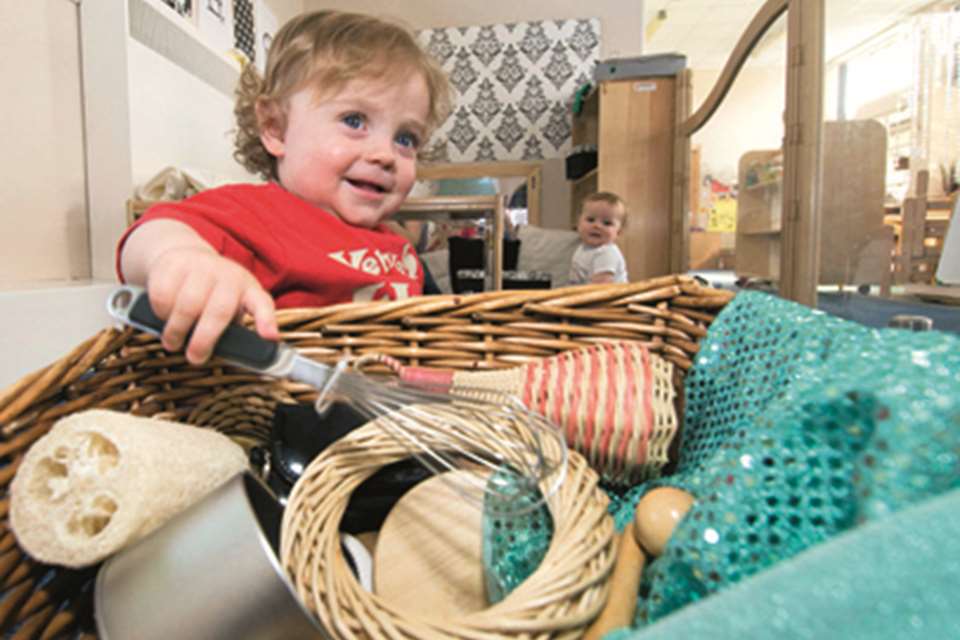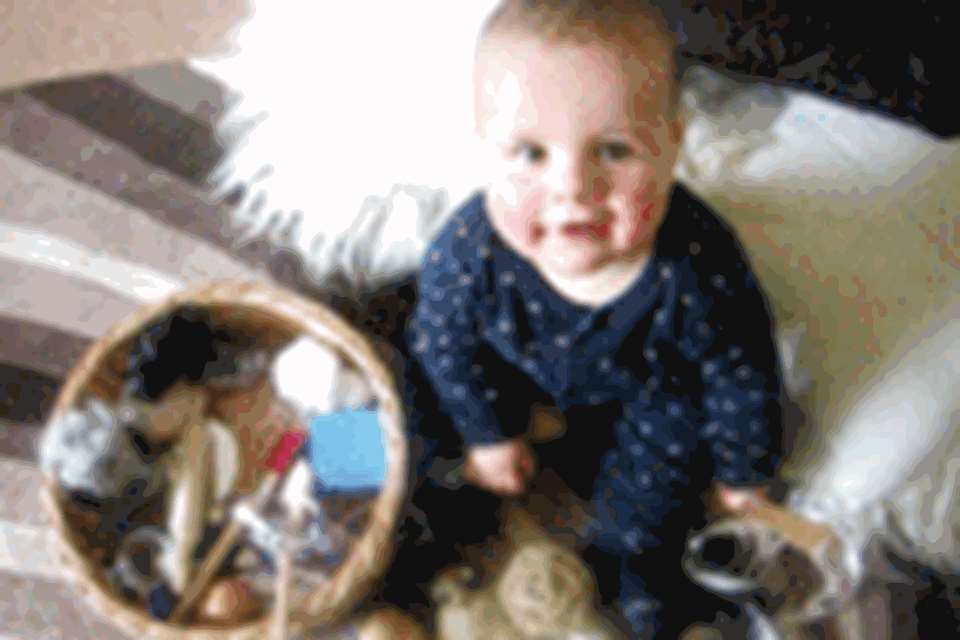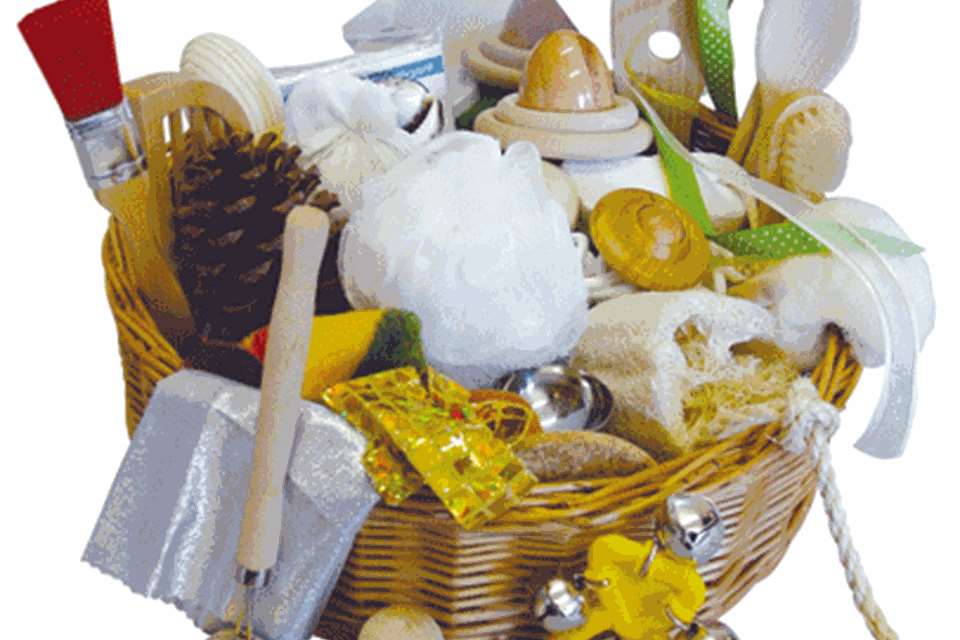Home learning - A parent's guide to ... treasure basket and heuristic play
Ruth Thomson
Monday, August 24, 2015
Giving your child opportunities to explore a variety of objects can aid their developmental progress. Penny Tassoni explains.

Babies, at the age where they can sit up, and toddlers love exploring objects and are fascinated by sounds and textures. For many years, treasure basket play and heuristic play have been used in nurseries to support their development. Indeed, you may have seen children playing with an assortment of objects and wondered what they were doing. So what is involved in these play approaches? And how do they benefit children?
FIVE THINGS YOU NEED TO KNOW ABOUT THIS PLAY
1. No toys
While there are differences between treasure basket and heuristic play, they both involve children playing with a group of objects rather than toys. This is because by their very design toys have a set purpose, and this can be limiting. Playing with a range of objects provides more possibilities for children to explore. A baby may combine an enamel cup with a nail brush and bang them together before moving on to suck the end of the brush.
2. Natural materials
One of the main differences between treasure basket and heuristic play is that treasure baskets contain only objects made with natural materials. The items are usually provided in a low basket that babies can reach into. It is thought that natural materials provide babies with more sensory feedback - and touch and taste are the key ways babies process information. They move onto heuristic play once they start to walk.
3. A mix of everyday objects
The items for heuristic play are usually arranged on the floor in clusters. You can put out objects made from both natural and man-made materials, and a mixture of container types and smaller objects seems to work well.
Some of the objects in heuristic play are much larger than those in treasure baskets, as children are able to stand and also have more control over their movements.
This extra strength and control means that many toddlers use heuristic play to stack boxes or tins together and to post or drop smaller items into containers. As toddlers like to repeat their actions, you need to provide several of the same item - for example, ten corks that can be posted down a tube.
4. No adult guidance
One of the interesting features of treasure basket and heuristic play is the way that adults avoid making any suggestions or guiding children as to how to play. It is up to children to decide what to reach out for and how to explore the objects. This is thought to help with confidence and help them learn to concentrate for longer. Adults are always present, though, for safety reasons and because babies and toddlers often want to share their discoveries.
5. Developmental benefits
Treasure basket play and heuristic play benefit children in various ways. Many adults are surprised by the length and level of concentration that even babies show. This play also stimulates the senses, develops hand-eye co-ordination and strengthens the muscles used to sit and squat. It enables children to explore the concepts of shape, size and texture, as well as learning about cause and effect.
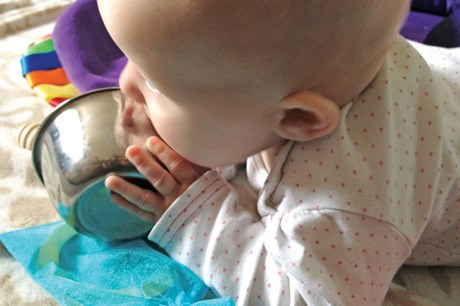
WHAT TO USE
You can buy ready-made treasure baskets and heuristic play items, but it is easy to gather together groups of objects. For children to benefit from treasure basket play, there needs to be variety. For babies, the idea is that each item they handle is different so that they feel different weights, textures and materials.
For heuristic play, the style changes slightly. A mixture of containers and clusters of small items seems to work well, although a good variety is also needed. There is no 'set' list of objects, but it is important to keep safety in mind.
The objects that you choose for both kinds of play are likely to be put in the mouth as well as handled. So avoid sharp edges, items that can disintegrate and small objects that might be choking hazards.
Treasure basket play
Use objects made from natural materials only, for example:
- objects made principally from wood, such as a nail brush, honey dipper, make-up brush, shaving brush, wooden spoons of different sizes, wooden tongs, a small wooden bowl, a thick cork coaster, or wooden curtain rings
- objects made principally from metal, such as a metal teaspoon, a tea strainer, small and medium metal bowls or a small metal tin
- leather and fabrics, such as a wallet, a purse, a woollen scarf, a cotton handkerchief or a piece of lace
- other objects, such as a make-up mirror, a plunger, loofah, a fresh whole lemon, a grapefruit or a large flat pebble.
Heuristic play
Provide an assortment of everyday objects, including those above plus:
- containers, holders and tubes - such as a kitchen towel holder, a mug tree, saucepans, metal biscuit tins, roasting tins, poster tubes, plastic cylinders, funnels, cardboard boxes with lids, plastic bottles or flower pots
- smaller objects such as corks, curtain rings, bracelets, wooden spills, shells, spoons, dolly pegs or very large buttons.
PRESENTATION
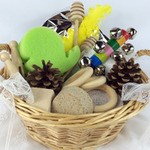 Treasure basket play takes place on the floor. You will need about 30 or so items grouped together in a pile. Ideally, they should be put in a very low basket so that your baby can reach them easily (a high-sided basket is likely to tip up and so may be unsafe).
Treasure basket play takes place on the floor. You will need about 30 or so items grouped together in a pile. Ideally, they should be put in a very low basket so that your baby can reach them easily (a high-sided basket is likely to tip up and so may be unsafe).
If you don't have a suitable basket, you could just put them in a pile on the floor or use a low-sided sturdy cardboard box. If your baby can't quite manage to sit up unsupported, you might like to sit behind them.
Heuristic play requires a clear space so that your child can focus on the objects. Choose several types of containers, along with ten or more of each of the smaller items.
Group each type of object in a cluster so that children can see them easily - for example, the biscuit tins together, and the shells together. This is important, as once children have discovered an action it is likely that they will want to repeat it in exactly the same way and they may become frustrated if they cannot find the objects they need.
Once your child begins to lose interest, encourage them to help tidy away the items. Tidying away is seen as part of this activity and, ideally, try to keep smaller items in individual bags or boxes so that your child learns to do a little sorting.
FIVE TIPS TO GET THE MOST OUT OF THIS PLAY
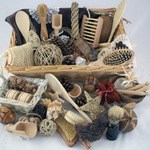 1. Choose a good time
1. Choose a good time
For babies and toddlers to gain the most out of this type of play, it is worth choosing a time when you know that they are not too tired. This will allow them to concentrate for a longer period. It is not unknown for babies and toddlers to spend at least half an hour enjoying this type of play.
2. Avoid directing your child
Babies and toddlers are naturally curious, so there is no need to direct this type of play, although you do need to sit close by. While some children start to reach out quickly for the objects, others take a little time to get going. With you simply smiling and nodding, children should soon work out that they are allowed to touch and explore.
3. Allow enough time
As this type of play helps children to concentrate, it is worth putting this type of play out when you are not in a rush to go and do other things. This is important, as children can sense when adults are fidgety. Instead, sit and enjoy not having to entertain your child and watch how creative and thoughtful they can be.
4. Observe your child
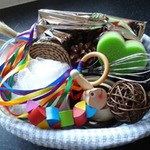 While your child is playing, you need to observe, for safety reasons and to see what interests your child. Your baby, for example, may be fascinated with a shiny item, and so at another time you could hold them in front of a mirror. With toddlers, you may notice that they stack tins or post corks into a bottle - and you could put out similar objects for other times.
While your child is playing, you need to observe, for safety reasons and to see what interests your child. Your baby, for example, may be fascinated with a shiny item, and so at another time you could hold them in front of a mirror. With toddlers, you may notice that they stack tins or post corks into a bottle - and you could put out similar objects for other times.
5. Introduce new objects
Variety is the spice of life - and when it comes to this type of play it is worth introducing a few new objects into the mix and taking out others. Just by bringing in three or four new items, children will be able to make new connections between them. If you have observed your child, you will have a good idea of which things to keep and also what you might take out.
COMMON QUESTIONS
Q. I worry about the safety of treasure basket play.
A. This is a perfectly safe activity, provided that you choose items that are large and solid enough not to be swallowed and don't have sharp edges. It is also a good idea to try any items out for yourself. Feel the edges and see how it fits in your own mouth. Judge whether it might disintegrate if it is pulled.
You should also be on hand and vigilant when you introduce items, so you can remove them quickly if there is a problem. It is also important to inspect items each time you put them out to check that they haven't degraded with use.
Remember that babies have been given objects to hold for centuries, and toys specially for babies are something relatively new.
Q. My child doesn't seem that interested in heuristic play.
A. There are several factors that can influence the success of heuristic play. It may be that your child was tired at the time they tried it, or you may not have put out sufficient objects. The latter is often the reason children don't stay and play. Have another go and see if you can increase the diversity and overall quantity of what is on offer. Make sure also that you are relaxed and sitting fairly still. This helps children to settle and concentrate.
NEXT STEPS
Children are usually interested in a range of everyday objects, but how they play with them changes over time. You may, for example, start to see your child pretending to drink from a tin or pretending to cook by stirring shells around with a spoon. This is the beginning of a style of play where children use items symbolically - where one thing represents another.
Suppliers of treasure baskets and heuristic play products include:- www.cosydirect.com
- www.earlyexcellence.com
- www.finesolutions.co.uk
- www.heritagetreasurebaskets.co.uk
- www.hope-education.co.uk
- littleacornstomightyoaks.co.uk
- www.playtoz.co.uk
- www.reflectionsonlearning.co.uk
- www.tts-group.co.uk
]]


